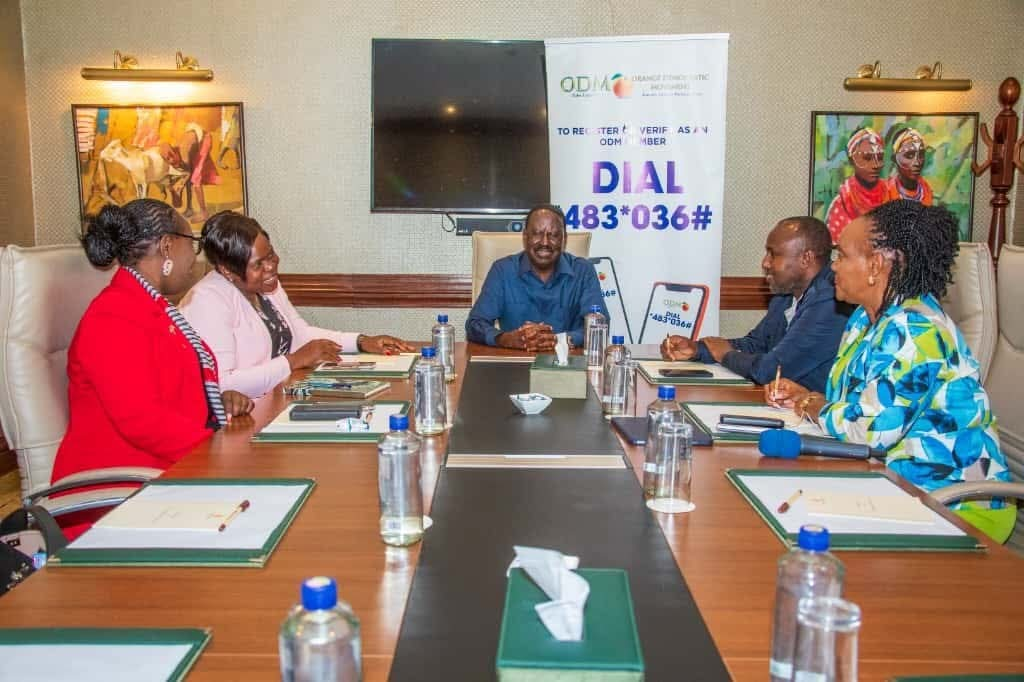ODM leader Raila Odinga has reappeared after weeks of silence that fueled speculation about his health and political future, just as his party prepares for the climax of its 20th anniversary celebrations in Mombasa.
For nearly two weeks, Odinga had been out of the public eye, his absence most notable during the ODM rally in Kisii where senior party figures took charge in his place. That no-show stirred debate within political circles and among supporters, with reports later emerging that he had traveled abroad for medical treatment before being admitted to The Nairobi Hospital upon his return. ODM officials have attempted to play down the matter, insisting the former Prime Minister remains firmly at the helm of the movement.

On Thursday, however, Odinga is said to have received a full briefing on the plans for the Mombasa finale, which will stretch over three days and feature youth and women’s forums, cultural events, and a mega rally designed to remind Kenyans of ODM’s resilience over the past two decades. The anniversary is being framed not only as a moment of reflection but also as a political stage from which Odinga hopes to reassert his influence as the country inches closer to the 2027 elections.
Yet even as Odinga steps back into the limelight, the political terrain around him has shifted. ODM extended invitations to President William Ruto and Prime Cabinet Secretary Musalia Mudavadi, signaling a pragmatic embrace of a new reality in which alliances are fluid and ideological lines increasingly blurred.

But Kalonzo Musyoka, Odinga’s long-time ally turned rival, has already declined the invitation. Their parting of ways had become inevitable after Odinga agreed to work with Ruto’s broad-based government, a decision that fractured the Azimio coalition and widened the rift between the two leaders. Kalonzo’s refusal to attend the Mombasa celebrations is therefore more than a personal snub—it is a symbolic break that underscores the death of a political partnership once central to the opposition.

By reemerging now and taking direct charge of ODM’s milestone event, Odinga is sending a clear message that he is still the face of the party and not ready to fade from the national stage. But questions about his health linger in the background, and doubts remain over whether ODM can maintain cohesion in the face of shifting loyalties and new alignments.
As the Mombasa celebrations approach, the event promises to be more than just a commemoration of ODM’s journey. It is also a test of Raila Odinga’s ability to rally his base, reassert his grip on the party, and chart a future for ODM in a political landscape where old alliances have crumbled and new ones are taking shape.


